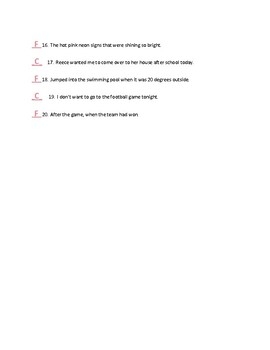When it comes to writing, understanding the difference between fragments and complete sentences is crucial. Fragments are incomplete thoughts that lack a subject, verb, or both. On the other hand, complete sentences contain a subject and a verb and express a complete thought. Let’s delve deeper into the distinction between the two.
Fragments are often considered incomplete sentences because they do not express a complete thought. They can be missing a subject, a verb, or both. For example, “Running down the street.” is a fragment because it lacks a subject. Complete sentences, on the other hand, contain a subject, a verb, and express a complete thought. For instance, “She is running down the street.” is a complete sentence as it has both a subject (she) and a verb (is running).
It is important to avoid using fragments in your writing as they can make your writing unclear and confusing. Complete sentences, on the other hand, help convey your message effectively and ensure that your ideas are properly communicated. By using complete sentences, you provide your readers with a clear understanding of your thoughts and ideas.
When writing, always ensure that each sentence you write is a complete sentence. Avoid using fragments as they can disrupt the flow of your writing and hinder the comprehension of your readers. By using complete sentences, you can enhance the clarity and coherence of your writing, making it more engaging and effective.
In conclusion, understanding the difference between fragments and complete sentences is essential for effective writing. Fragments are incomplete thoughts that lack a subject, verb, or both, while complete sentences contain a subject and a verb and express a complete thought. By using complete sentences in your writing, you can ensure that your ideas are clearly communicated and easily understood by your readers.
